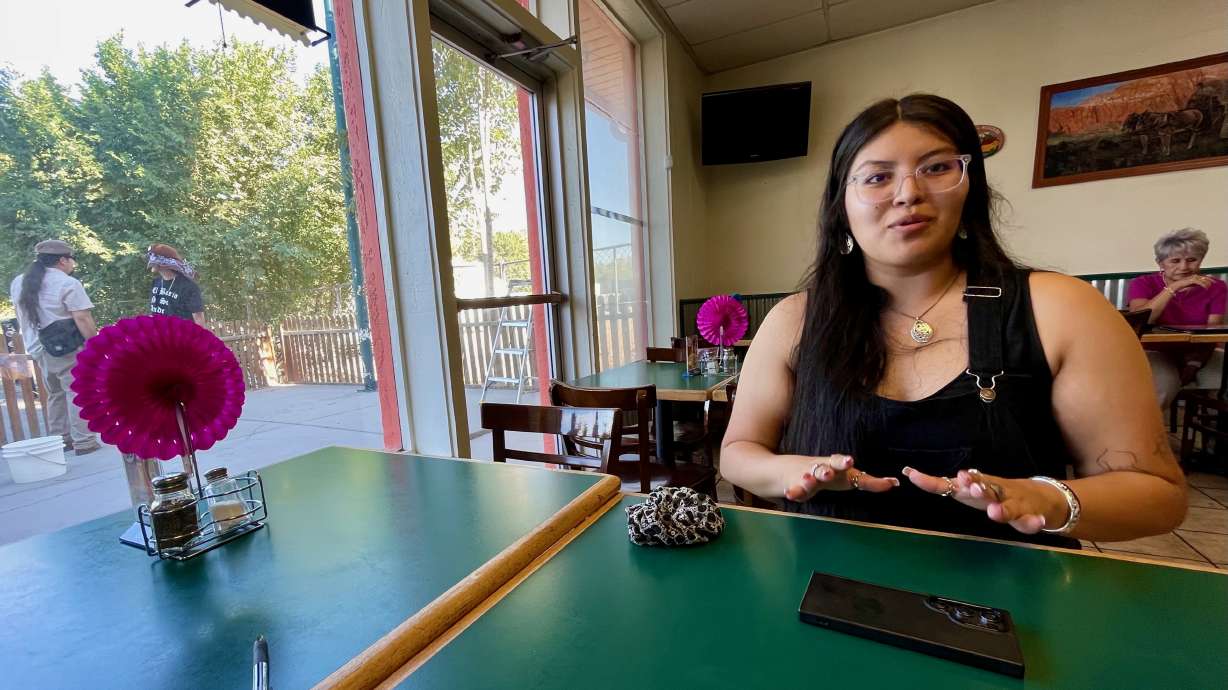SALT LAKE CITY — Efforts to lure a Major League Baseball team to Salt Lake City have been met with unbridled enthusiasm by many, including a bipartisan coalition of lawmakers and community leaders.
The Utah House and Senate last year overwhelmingly approved a resolution of support for bringing a team to Utah. Moves to lay the groundwork for development of a new stadium on the west side of Salt Lake City, meanwhile, have sped forward with strong support from both Salt Lake City and state officials.
Still, the backing hasn’t been unanimous. A handful of lawmakers voted against the 2024 resolution, as well as another key piece of 2024 legislation that creates the framework for state funding of a new baseball stadium, should Salt Lake City be picked to host a team.
Now, some west side activists already concerned about gentrification in the area are raising their voices in opposition to the baseball plans, worried that development of the 93-acre parcel where the stadium would sit, and development pressures in adjacent neighborhoods, could push out working-class residents.
“Even though it’s an open lot and there are no buildings around the open lot, it will still displace people on the outskirts of it,” said Alexandra Leal, a west side resident active in local affairs. She pointed to the development of Dodger Stadium in Los Angeles in the early 1960s, which happened in cooperation with leaders of the California city and ultimately led to the eviction of numerous Hispanic families that had lived in and around the site.
Those involved in the effort come from the Fair Park, Rose Park, Poplar Grove and Glendale neighborhoods and have been canvassing the area, talking to residents to get their take. They’ve also created a website, calling themselves Roots Over Stadiums and Erasure, or ROSE.
“We are continuing to gather responses from the community and figure out if they’re in favor of the MLB stadium, what their concerns are and how they can get involved,” Leal said.
In her dealings, Leal — who sees the stadium plans as an extension of ongoing redevelopment and gentrification in the west side, another point of contention for her and others who say they displace locals — senses opposition.
“They feel like they might be displaced in the future. Although it does not affect them currently, they notice that the people around them are being affected, so they want to bring change and be about the change too,” she said.
The ROSE website cautions that development of a new stadium could boost rental and mortgage costs for adjacent neighbors, lead to “unaffordable and luxury developments,” and “erase” community spaces geared to racial and ethnic minorities. It also cites worries that local history will be given short shrift.
The foes’ worries notwithstanding, many movers and shakers are solidly behind the baseball plans and have publicly endorsed Big League Utah, the coalition led by the Larry H. Miller Company, which is focused on bringing a Major League Baseball team to the state. They propose mixed-use development on the 93-acre parcel in the 1500 block of West North Temple, where the stadium would sit if baseball plans succeed. The largely industrial parcel, called the Power District, is now owned by Rocky Mountain Power.
A rendering of what a potential Major League Baseball stadium in Salt Lake City and the neighborhood around it could look like. (Photo: Larry H. Miller Company)
Significantly, Benn Buys, executive director of the Utah Fairpark Area Investment and Restoration District, thinks the plans will have a net positive effect, helping both residents and businesses in the zone. State lawmakers created the Fairpark district to help oversee redevelopment of the Power District parcel and the adjacent Fairpark neighborhood. The boundaries of the area don’t include existing housing, Buys said, tempering the potential for displacement of residents, while the plans envision thousands of additional housing units, including affordable housing.
“Combined with other development that is already happening in the area, this project will further reduce housing pressure, bring in needed investment, help to clean up the Jordan River, and bring services and amenities desired by residents,” Buys said. The river passes through the eastern edge of the parcel.
The Salt Lake City Council sought public feedback when the property in question went through the rezoning process, garnering “overwhelmingly positive” feedback, he said. Moreover, area residents Victoria Petro, a member of the Salt Lake City Council, and Dan Strong, head of the Westside Coalition, a local advocacy group, serve on the Fairpark district board.
“Both are supportive of bringing MLB to the area and recognize that for this project to be truly successful, the protection of current residents is crucial, and is something they have discussed with me. This local representation ensures that community interests are considered and front of mind,” Buys said.
Still, Leal has her doubts. She wonders “whether or not (baseball boosters) got input from the community and who was actually voting yes for this, because I don’t remember being asked if I wanted a Major League Baseball stadium next door,” she said.
Moreover, given the support the baseball plans have, it can be daunting to speak out against them, tempering voices of opposition. Many “are kind of scared to speak out because they feel like they might be persecuted, in a way, or that they might get in trouble for even bringing up an opinion,” she said.
Buys said the process of getting a team could take “several years,” factoring in the time it would take for Major League Baseball officials to make a decision on whether to expand and the time needed to build a new stadium.
Even so, some baseball experts have said Salt Lake City and Nashville, Tennessee, are among the strongest contenders for expansion squads.
The Key Takeaways for this article were generated with the assistance of large language models and reviewed by our editorial team. The article, itself, is solely human-written.
